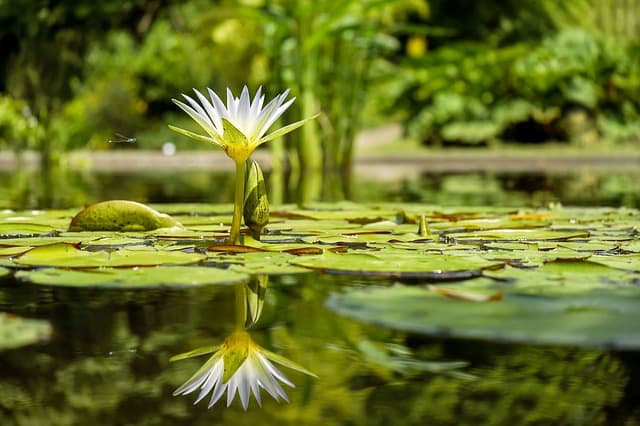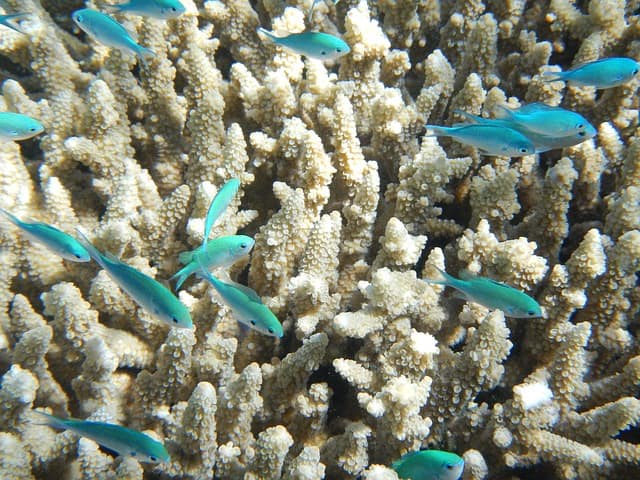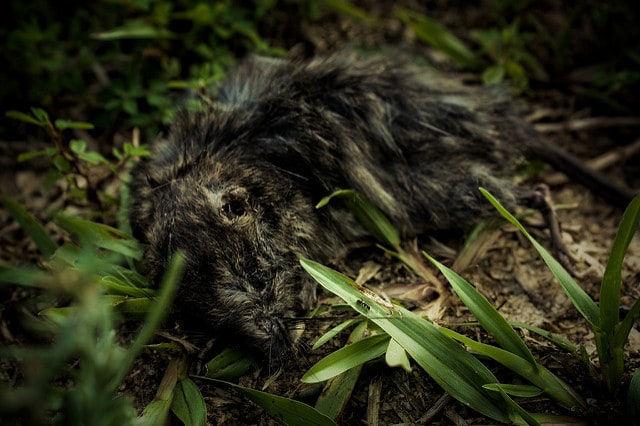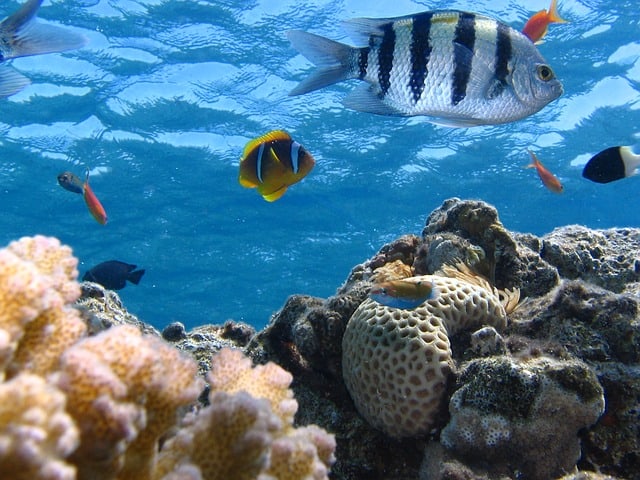FreshWater Biome: Climate, Precipitation, Plants, Animals and Types of Freshwater Biomes

Every inch of the earth’s surface consists of one or more biomes. A biome is a formation of flora and fauna (plants and animals) that have common characteristics as a result of similar climates and can be found on different continents. Essentially, biomes are distinct communities that have mushroomed due to a shared physical climate and the communities have developed special adaptations to that particular climate. Biomes should not be confused with habitats.
A biome can be made up of a wide range of habitats. There are 5 major types of biomes in the world; aquatic biome, forest biome, desert biome, tundra biome and grassland biome. Aquatic biome is further subdivided into freshwater biome and marine biome. These subdivisions depend on the salt content of the water and the aquatic plants and animals that flourish there. With that in mind, let’s explore freshwater biome, which is our topic of the discussion:
A freshwater biome is a large community of flora and fauna (plants and animals) that live in water bodies with low salt content, usually less than 1%. Examples of freshwater biomes include lakes, ponds, streams, rivers and even some wetlands. Freshwater biomes differ from marine biomes. Marine biomes are communities of plants and animals that live in salt water bodies such as oceans and seas.
Climate
Freshwater biome makes up only 0.8% of the entire water body on planet earth. The water making up this biome is also unevenly distributed throughout the world. Due to this uneven distribution, the climate of these biomes differs depending on the region they occur. Averagely, winter temperatures in freshwater biomes range from 65 degrees Fahrenheit to 75 degrees Fahrenheit in the summer. The winter temperatures, on the other hand, range from 35 degrees Fahrenheit to 45 degrees Fahrenheit. The climate of freshwater biomes hinges on an array of factors such as season, location, and water depth.
Averagely, freshwater biome temperatures will drop with deepening of the water. This phenomenon is more prevalent in lakes where water movement is relatively less, and water is deeper compared to a streams or rivers.
Precipitation
Precipitation in freshwater biomes depends on the region the biome is situated. Most wetlands in the world are located in temperate zones, which mean they will receive a lot of precipitation. Rivers and lakes situated in valleys and mountains may receive less precipitation. On average, precipitation in freshwater biome ranges from 10 to 80 inches per year.
Plants
Freshwater Biome plants are affected by the following factors: depth of water, rate of water flow, quality of water and temperature. Sunlight is particularly essential in supporting growth of plants in this biome.
In rivers and streams, vegetation usually thrives on the edges of the water body. Some common plant species on the edges of rivers and streams include contrails, star grass, and tape grass. Tree species like cottonwoods, willows, and river birch are supported by these streams and rivers. These tree species like to grow in shallow areas characterized by slow moving water.
In wetland areas like swamps, bogs, ditches, and marshes, the water is saturated all year round; consequently, the dirt present here holds in every ounce of water it can, creating mud in the long run. Plants dominating in wetlands include duckweeds and cattails. Common tree species here include tamarack, black spruce, and Cyprus.
It’s almost impossible for ponds and lakes to support a large community of plants due to their great depth. Common plants that thrive here include weeds and grasses. On some occasions, plant species such as lily pads and cattails can be seen floating in shallow ponds and lakes.
Some freshwater biome plants have developed unique adaptations and defense mechanisms to survive in this biome. For example, water lilies ensure their widespread in the biome by dispersing seeds. The flower of a water lily naturally develops a fruit that effectively floats in the water body and then sinks to the bottom, where it develops roots, and a new lily grows.
Water lilies also have unique adaptations to thrive in the freshwater biomes. They possess stomata that stay open throughout. Stomata are specifically used for gas exchange. Since water is in bountiful supply, lilies do need to retain more water within them. Due to the abundance of water, guard cells on water lilies are usually inactive. Water lilies also have flat leaves and air sacs that aid flotation, including specialized roots to suck up oxygen.
Water lilies have developed interesting defense mechanisms. They offer great protection for aquatic creatures that live in the water body. These creatures lurk under the water lilies and attack animals and birds that feed on the lilies.
Another common plant with impeccable adaptation and defense mechanism is the phytoplankton. The phytoplankton makes similar version of itself by spores growing inside the parent organism or by simple cell division. The plant releases the spores into the water body, which later grows and matures into an adult phytoplankton.
Phytoplanktons have unique adaptations to thrive in this biome. They don’t need true stems, leaves, and roots like most plants do; they suck up water and nutrients straight from the environment. This plant has developed numerous spines, pores and other projections that enhance its surface area, suck up nutrients and enhance sunlight exposure to aid photosynthesis. As a defense mechanism, phytoplankton changes shape to insulate itself from predators.
Animals
Freshwater biome supports a huge diversity of animals with special adaptations and defense mechanism. Freshwater biome animals include:
- River Otters
River Otters have strong adaptation to thrive in freshwater biomes. Their ears and nose remain closed in water and have long tails that act as paddles or oars to effortlessly glide through the water. Otters live in habitats such as streams, rivers, and creeks. They feed on frogs, fish, eggs, turtles, and water birds. However, the North American Otters are semi-aquatic animals, which mean they live in water and land.
- Crocodile
Crocodiles have characteristic sharp teeth for crushing and chewing prey, including strong claws. They mostly live in ponds, wetlands, canals, and creeks. Crocodiles feed on reptiles, fish, mammals, invertebrates, and birds.
- Freshwater turtles
Their main habitats are lakes, rivers, and ponds. Their unique adaptation is the strong shell that shields them from predators and other unknown threats. Freshwater turtles feed on fish, frogs, insects, plants and certain herbs.
- European Eel
European Eels mostly live in rivers and seas. They have adapted a sleek-like skin to effortless glide through the water. Their main diet includes small fish, invertebrates, earthworms, and insect larva.
- Black piranha
Black Piranhas mainly live in rivers. They have sharp teeth, which makes them very ferocious. They mostly feed on decaying carcasses, fish, beef hearts, fruits and seeds.
- Frogs
Frogs are incredible jumpers, which makes them uniquely adaptable to this biome. They live on trees, in ponds and creeks. Their diet consists of moths, grasshoppers, mosquitoes, mice, and dragonflies.
Other freshwater biome animals include Clear Lake Hitch, raccoons, Amazon River dolphins and much more.
Types of Freshwater Biomes
Freshwater biomes are divided into three:
Ponds and lakes
Ponds and lakes are sometimes referred to as lentil ecosystems, meaning they consist of standing or still waters. Essentially, the waters don’t flow like streams and rivers. Lakes are normally divided into 4 zones of freshwater aquatic communities:
Littoral zone: The area adjacent to the shore of the lake where plants thrive
Limnetic zone: Open water surfaces off the shore
Euphotic zone: Area near the water surface that receives some sunlight to aid photosynthesis
Benthic zone: The bottom of the lake.
Animals that live in lakes include different fish species, frogs, snails, crayfish, worms, insects, turtles and so on. Plants that thrive in lakes include duckweed, lilies, bulrush, bladderwort, stonewort, cattail and so on.
Rivers and streams
They are sometimes known as lotic ecosystems, meaning they have moving waters, as opposed to stagnant waters of lakes and ponds. This kind of biomes comes in different sizes including minute trickling streams and mile-wide rivers that are able to travels thousands of miles.
Different animal species live in and around rivers including fishes, snails, crabs, insects, crocodiles, salamanders, snakes, beavers, and otters. Plant species existing around rivers thrive depending on river location on the globe. Plants naturally populate the edges of the river where water flows slowly. Plants here include star grass, tape grass, river birch and willow trees.
Wetlands biome
This freshwater biome is a combination of land and water. It’s, essentially, land saturated with water. The land may be flooded with water or totally submerged most of the time. However, it supports aquatic plants. Typical examples of wetlands include swamps, marshes, and bogs. These wetlands are usually situated in proximity to large water bodies such as lakes and rivers and are pretty much found all over the world. When they are situated in proximity to rivers, they can aid in the mitigation of flooding and assist purify and filter water. Examples of wetland plants include water lilies, milkweed, cypress trees, mangroves, and cattails. Examples of wetland animals include crocodiles, alligators, raccoons, beavers, deer, and minks.






